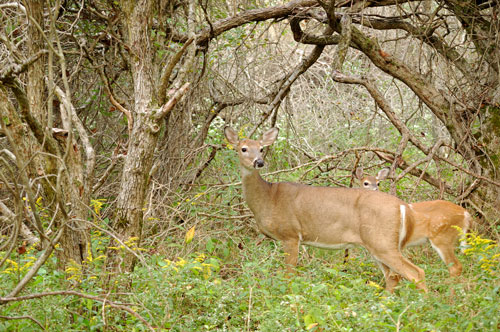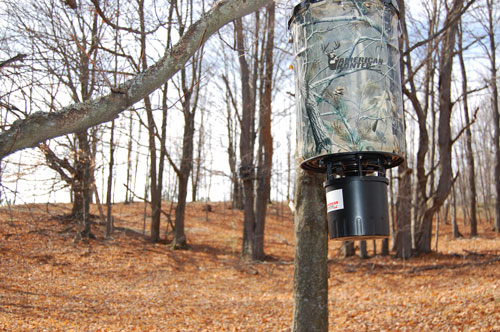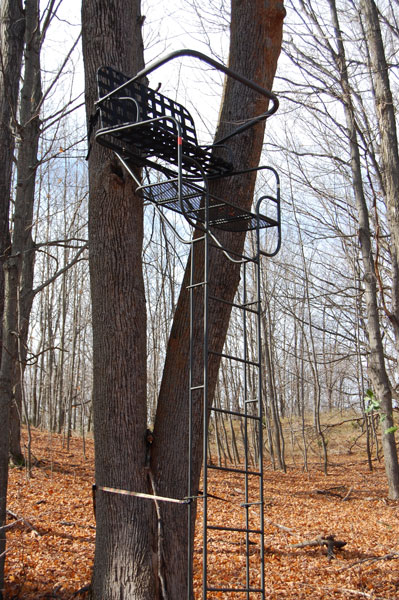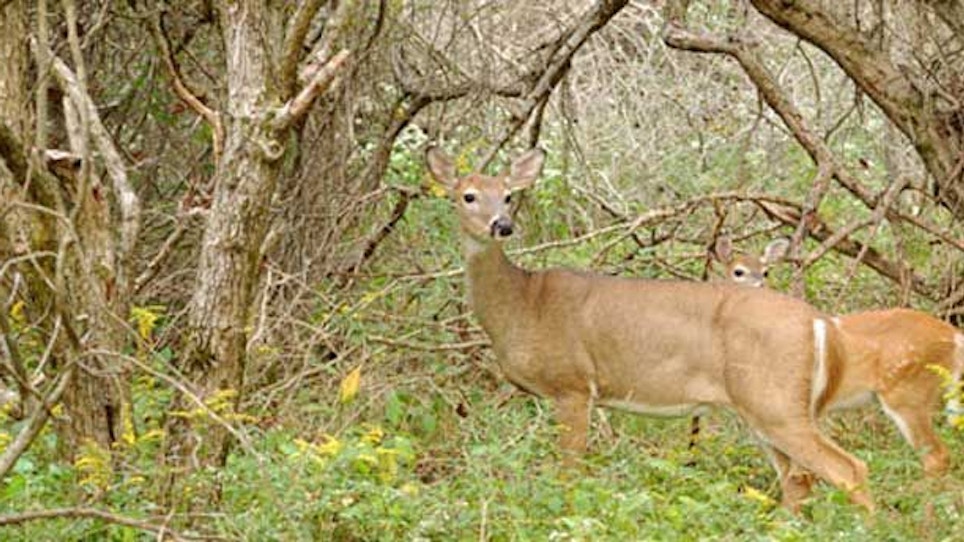 In the 2011 season, I had apple trees so loaded with fruit, they could barely stay up under the weight of it all. My food plots were thick and lush and I had more deer running around my farm and showing up on game cameras. It was an awesome year. This past year… not so much.
In the 2011 season, I had apple trees so loaded with fruit, they could barely stay up under the weight of it all. My food plots were thick and lush and I had more deer running around my farm and showing up on game cameras. It was an awesome year. This past year… not so much.
Much of the Midwest and Eastern states lost fruit in the spring of 2012 when an early warm spell hit in March, causing trees to blossom two to three weeks early. Then in April, Mother Nature decided to remind us who is boss and sent a hard freeze across much of the country, wiping those tender blossoms and buds out and along with them, the hopes of a fruit crop for not only the farmers, but the deer hunters who had high hopes of another strong season.
Mother Nature wasn’t done. According to the United States Department of Agriculture (USDA), over 50 percent of the country experienced severe drought in 2012. I don’t know about you, but the drought completely destroyed all of my food plots. I couldn’t water them enough to keep them alive. I ended up with nothing but tilled soil. Not even weeds would grow.
So what do you do when Mother Nature changes your hunting plans?
First I had to determine how it was going to affect the deer. I live in Michigan, and in 2012, we also had a severe outbreak of EHD, killing off a reported 40,000 deer from the lower portions of the state. Let’s face it — it just wasn’t a great season to be a deer. Tracking movements and learning patterns is difficult when the food sources are hard to determine, let alone when there are fewer deer to track.
The first thing you need to do, if this happens in your area, is take a walk around where you intend to hunt and see what is going on. If you’re like me and your food plots withered in the heat, see if you can tell what the deer are eating. In my case, they were hitting the alfalfa fields pretty hard and instead of moving far away, were bedding down in a swamp, just off the field. Normally, the deer on my farm don’t move into the swamp until later in the summer, as it typically is wet for much of the spring and early summer months. This is an area I always view as a sanctuary and is pretty much hands-off. I did slowly walk through it once, well before season, mostly to confirm that it was being used.
 Supplemental Feeding
Supplemental Feeding
Feeders have a place in deer hunting, and this season, I gave them a try, starting with a bucket feeder from American Hunter. Mineral blocks and feeders should be placed close to but not directly on deer movement paths. As with anything, you have to check with your local laws to make sure it’s legal to feed deer.
I find it funny that before the season starts, this is viewed as supplemental feeding. During the season, this is viewed as baiting, and the restrictions get even tighter. I don’t know about you, but I have mixed feelings on baiting. Overall, I’m not a fan of it and generally don’t do it, even though in Michigan it’s perfectly legal most of the time. On the other hand, in a season like this, it does get difficult to pin the deer down, and if you don’t have a ton of time, baiting might help. Plus, as so often is the case in states like mine, there is some validity to the argument that a hunter needs to bait when all of the hunters around him, or her, are doing it too.
I, as a rule, don’t hunt over bait. I’m not going to judge you if you do and I’m not going to look down upon you as a hunter if you do, either.
 Stand Placement
Stand Placement
I used to rely pretty heavily on one stand, placed over a food plot. It was in a great location too, because it was good for all winds but a southeast, which is almost nonexistent during deer season in my area.
The new problem was that with no food plot this season, the deer were staying in the heavier cover and moving further away, not coming in range at all. Time to relocate the stand and add some more. I will admit that I didn’t look forward to buying more stands. They aren’t cheap. My main stand is a two-person unit from Family Tradition Treestands. I ended up adding single-person ladder stands from Summit and River’s Edge this season in an effort to engage deer that were moving in harder-to-determine patterns. That is a key element to being successful in years when the weather patterns have adversely affected your hunting. What typically works where you hunt will more than likely be very different this season. Cast your net wider than usual to get on the deer if you want to fill your tag.
Doe photo by Bruce MacQueen/Getty Images/iStockphoto/Thinkstock






